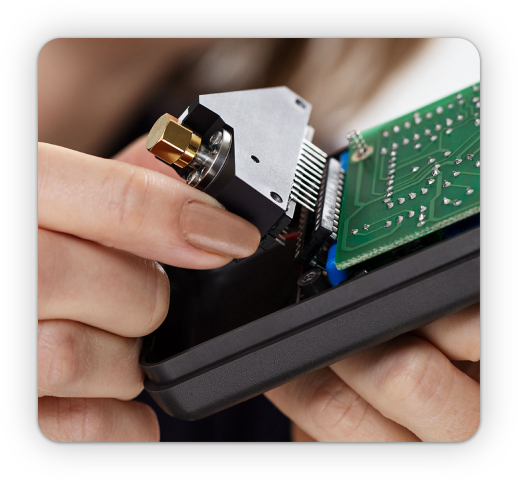Comparison of SONY ILX511B CCD and Hamamatsu S10420 BT-CCD for VIS spectroscopy
Introduction
One of the key elements in a diffractive spectrometer is the line array detector used to measure intensity versus wavelength. Two of the more popular detector arrays are the low cost SONY ILX511B front illuminated CCD and the higher cost Hamamatsu S10420 Back-Thinned CCD (BT-CCD). It is generally a difficult task to make a direct comparison of detector arrays based purely on the data sheet information. Therefore, Ibsen Photonics has done comparative measurements on these two detector arrays when used inside an actual spectrometer unit, and in this Technical Note we show results for sensitivity and Signal-to-Noise Ratio (SNR) for the two detectors. See Figure 1 for a schematic diagram of the diode array spectrometer used for the tests. It is important to note that Ibsen Photonics has no preference for any of the two detectors and we sell spectrometers using both. The purpose of this technical note is merely to provide some objective information that we think is useful for our customers in deciding which detector type to choose. Also, while we focus on sensitivity and SNR in this technical note, it is important to note that there are other parameters (like linearity, built-in dark pixels, cost, etc.) that may also influence the choice of detector for a given application.

Figure 1: Example of diode array diffractive spectrometer
Sensitivity
The sensitivity of a spectrometer is determined by many parameters (diffraction efficiency of the grating, reflectivity of mirror coatings, size of slits and apertures, detector sensitivity etc.). In order to compare the sensitivity of the two detectors alone we measured the spectral response of the same spectrometer equipped with either the SONY ILX511B or the Hamamatsu S10420-1004-01 detector. The ILX511B was with-out a window and was coated with a Lumigen coating while the S10420-1004-01 detector had a standard quartz window. The same control electronics were used for both spectrometers. Integration time was 2 msec and the input light source was a calibrated Tungsten-halogen lamp. The gain in the electronics was adjusted to ensure that the dynamic range of the detector matched the dynamic range of the 16 bit A/D converter. The results are shown on Figure 2 and clearly show that the ILX511B detector provides higher sensitivity than the S10420 in the 480 – 730 nm. Below 480 nm and above 730 nm the S10420 has higher sensitivity than the ILX511B. Figure 3 shows the sensitivity ratio as a function of wavelength for the two detectors. As an example, if you want to adjust your integration time to obtain a certain signal level (in counts), the integration time needs to be up to 2x longer for the S10420 than for the ILX511B. Alternatively, you must use a lamp with a twice as high intensity for your spectroscopy with the S10420 as with the ILX511B. However, sensitivity is only telling us how much signal level we can get. We also need to consider the noise level of the two detectors.
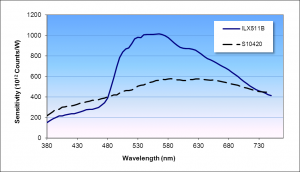
Figure 2: Measured sensitivity of a VIS spectrometer using either the ILX511B or the S10420 detector
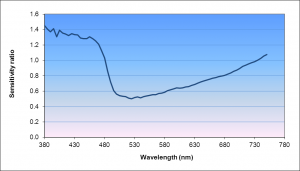
Figure 3: Sensitivity ratio of S10420 over ILX511B
Signal to noise ratio (SNR)
The RMS noise level of a detector depends on the optical signal level on the detector so, generally speaking, there is not a single number characterizing SNR for a spectrometer. The measured RMS noise as a function of signal level is shown on Figure 4. As can be seen the RMS noise is more than 2x lower for the S10420 than for the ILX511B. Spectrometers are normally characterized by
- the SNR at full signal (65,535 counts for a 16 bit A/D converter)
- Dynamic range (Full signal divided by Dark noise or noise at 0 counts).
Table 1 lists these parameters for the two detectors and Figure 5 shows the SNR as a function of signal level.
| Detector | SNR (at full signal) | Dynamic range |
|---|---|---|
| ILX511B | 380 | 1,000 |
| S10420 | 820 | 5,000 |
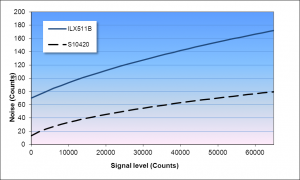
Figure 4: Noise as a function of signal level (16 bit A/D converter)
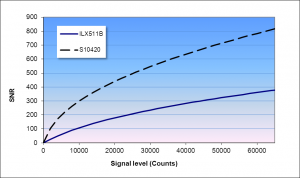
Figure 5: SNR as a function of signal level (16 bit A/D converter)
Using Figure 3 and Figure 5 it is possible to estimate the SNR difference at any signal level, wavelength and integration time (as long as the integration time is kept below ~500 msec).
Averaging considerations
One way to improve the SNR is to perform averaging over a number of consecutive measurements. By doing so, the noise level is improved by a factor of the Square Root of N, where N is the number of measurements. So, since the ILX511B can reach the same signal level as the S10420 in half the time, we can use this to perform twice as many measurements with the ILX511B compared to the S10420.
Cost considerations
As written in the introduction the ILX511B detector array is lower cost than the S10420. However, for many applications the ILX511B has to have its cover window removed and AR-coated to reduce oscillations in the spectral response due to a Silica passivation layer on the chip. This AR-coating obviously adds extra cost to the ILX511B, but it is still lower cost than the S10420 by at least a factor of 2. Also, the electronics interface to the S10420 BT-CCD detector is more complex and requires more electrical components than the ILX511B. This causes the electronics for the S10420 to be more costly than the electronics for the ILX511B.
Summary
In summary, we have made comparative measurement of two highly sensitive CCD detector arrays commonly used in spectroscopy – the SONY ILX511B and the Hamamatsu S10420. Both detectors have their strong and weak points, so the final choice of which detector best matches your application depends on the following:
- If technical performance – i.e the best Signal-to-Noise ratio for the available light input – is most important, you should opt for the Hamamatsu S10420.
- If low cost is most important, you should opt for the Sony ILX511B.
We hope you find this technical note useful and are happy to receive feedback and suggestions for improvement as well as ideas for future technical notes.
Want to know more?
For further information see below.
Compact and high performance
The FREEDOM platform is a series of cost-efficient, pre-configured compact OEM spectrometers for the UV, VIS and NIR wavelength ranges that provide:
FREEDOM combines compactness and low cost with high performance, and is the ideal OEM solution for all those handheld and portable system applications, where performance cannot be sacrificed to obtain compactness and/or low cost.
Configurations:
